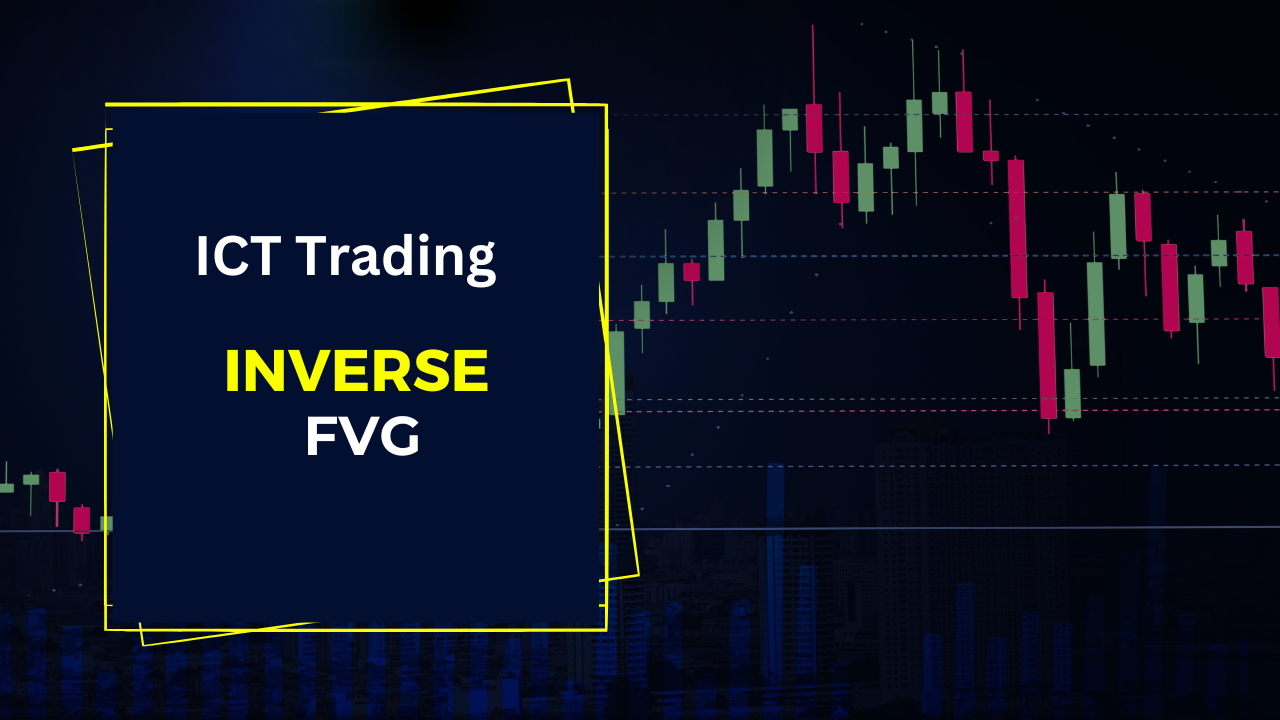In the world of Inner Circle Trading (ICT), traders are always searching for key strategies that help them better understand market behavior. One such concept is Inverse Fair Value Gap (FVG), an essential tool in price action trading that helps traders identify market inefficiencies. inverse fvg Mastering this concept allows traders to make more informed decisions and improve their trading strategies.
This guide will break down everything you need to know about Inverse FVG, how it fits within ICT methodologies, and how traders can effectively use it to their advantage.
Introduction to Inverse FVG in ICT
Inner Circle Trading (ICT) has provided traders with many techniques to decipher market movements and spot profitable opportunities. A major part of this is the concept of Fair Value Gaps (FVGs), which represent market inefficiencies created during volatile price movements. When an FVG occurs, there is a gap between the closing price of one candlestick and the opening price of the next, indicating a possible price imbalance.
In ICT, Inverse FVG plays a unique role, offering additional insight into how prices are likely to behave during retracements or corrections. Understanding Inverse FVG allows traders to capitalize on price action by predicting when the market may correct these imbalances, providing better entry and exit points. This makes Inverse FVG an important tool for any trader looking to refine their ICT trading strategy.
Understanding Fair Value Gaps
What is a Fair Value Gap (FVG)?
A Fair Value Gap (FVG) is a gap created in the price chart when the market experiences rapid movement, often due to news events, sudden market volatility, or institutional orders. During these moments, price moves so quickly that it skips over certain price levels, leaving an imbalance or “gap” in the market.
This gap typically occurs between the closing price of one candlestick and the opening price of the next, forming what we call a Fair Value Gap. The market tends to seek out these gaps to correct the price imbalance, eventually retracing back to “fill” these gaps. In other words, FVGs are temporary inefficiencies in the market that the price is likely to return to at some point.
Importance of FVG in ICT Market Structure
In ICT trading, Fair Value Gaps are viewed as crucial signals that suggest future market movements. ICT traders believe that these gaps must be filled, and the market will eventually move back into these areas. By identifying these gaps, traders can position themselves strategically in the market.
For instance, after an FVG forms following a strong upward or downward price movement, ICT traders anticipate that the price will eventually return to that area to fill the gap before continuing its trend. This makes FVGs highly valuable for determining entry points, stop-loss levels, and profit targets.
Key Features of FVGs
- Occurs during volatile market movements: When the price moves rapidly without interacting with certain price levels.
- Represents market inefficiency: Indicates an imbalance that the market is likely to correct.
- Predictive nature: Price is expected to return to the gap and “fill” it before resuming its trend.
What is Inverse FVG?
Definition and Characteristics of Inverse FVG
An Inverse Fair Value Gap (Inverse FVG) is a concept within the Inner Circle Trading (ICT) framework that represents a specific market inefficiency. Unlike traditional Fair Value Gaps (FVG), which typically highlight gaps left behind after a sharp move in one direction, an Inverse FVG emerges when the price retraces back through a previously created Fair Value Gap, filling the gap, but leaving an opposite directional imbalance.
This retracement or price correction is critical in understanding price dynamics within the ICT methodology. The market often “searches” for these Inverse FVGs to balance itself, creating opportunities for traders to identify potential reversal points or areas where the price might react.
Key Characteristics of Inverse FVG
- Occurs during retracement: It forms when the price moves back to fill a previous FVG.
- Signals market inefficiencies: Indicates an imbalance opposite to the one caused by the initial FVG.
- Often leads to price reaction: Once the price revisits the area, it may reverse or continue, depending on market conditions.
Why Inverse FVG Matters in Trading
The Inverse FVG is an essential concept for traders focused on price action analysis. It helps traders identify key areas of interest where the market might make significant movements. When a price retraces and fills the Fair Value Gap, it often creates an opportunity for re-entry or continuation in the opposite direction. Understanding this helps traders refine their entries and exits, leading to more precise and profitable trades.
Traders can use Inverse FVGs to:
- Identify potential reversal zones.
- Predict market corrections.
- Optimize entry points for trades.
- Place strategic stop-losses around these areas.
How Inverse FVG Fits in the ICT Market Structure
Role of Inverse FVG in ICT
In the ICT market structure, understanding price action is crucial. Inverse FVG fits seamlessly into this structure as a tool that highlights areas of market inefficiency. When a Fair Value Gap is created, it signals an imbalance that the market needs to correct. Inverse FVG comes into play once that correction starts happening.
Here’s how Inverse FVG works within the ICT market structure:
- When a Fair Value Gap is created during volatile price action, traders watch for the market to fill the gap.
- Once the price revisits this gap, it leaves behind an Inverse FVG, signaling a potential market reversal or the continuation of the overall trend.
- Inverse FVG helps traders predict whether the price will bounce off this area or move further.
Inverse FVGs offer insight into market behavior and provide strategic opportunities for ICT traders to anticipate future price movements.
Combining Inverse FVG with Other ICT Concepts
To fully leverage Inverse FVG in trading, it’s often combined with other key ICT concepts like the Break of Structure (BOS) and the premium/discount theory. These strategies help traders identify when the market might change direction or when the price will retrace to fill a gap before continuing in its original trend.
How it works:
- When price creates an Inverse FVG after filling the Fair Value Gap, traders can look for a Break of Structure (BOS) as confirmation of a potential reversal.
- Premium/discount levels help traders understand whether the market is overbought or oversold, improving the likelihood of successfully using Inverse FVG to find ideal entry points.
By understanding how Inverse FVG fits into the ICT market structure, traders can significantly enhance their ability to predict market movements and optimize trade setups.
How to Identify an Inverse FVG
Step-by-Step Process to Identify an Inverse FVG
Identifying an Inverse Fair Value Gap (Inverse FVG) requires a clear understanding of price action and the market structure within the ICT framework. Here’s a step-by-step process to help you identify an Inverse FVG on a price chart
Spot the Original Fair Value Gap (FVG)
The first step is to locate the original Fair Value Gap (FVG), which occurs when there is a sharp price movement, leaving a gap between the closing price of one candle and the opening price of the next. This gap represents a market inefficiency.
Wait for the Retracement
After identifying the original FVG, monitor the market for a retracement or pullback. The price will likely revisit the FVG area to “fill” the gap, correcting the previous imbalance.
Identify the Inverse FVG Formation
Once the retracement occurs and the price fills the original FVG, an Inverse FVG is formed. This happens when the price retraces beyond the original gap and creates a new gap in the opposite direction, signaling a potential reversal or continuation of the trend.
Confirm the Inverse FVG with Candlestick Patterns
To validate the formation of an Inverse FVG, look for specific candlestick patterns such as engulfing candles or pin bars near the gap area. These patterns can provide additional confirmation that the Inverse FVG is likely to result in a market reaction.
Use Technical Indicators
While price action is key to identifying Inverse FVGs, using additional tools such as volume indicators, moving averages, or Fibonacci retracement levels can help confirm the presence of an Inverse FVG and increase the accuracy of your analysis.
Key Price Movements to Look For
- Sharp move creating the original FVG: Look for a rapid price movement that creates a gap.
- Price retracement back to the gap: The price revisits the gap and fills the area.
- Opposite directional gap: As the price retraces, an opposite gap forms, signaling the Inverse FVG.
Conclusion
Understanding and using Inverse Fair Value Gaps (Inverse FVGs) within the ICT trading framework can give traders a powerful edge in the market. These gaps represent key price imbalances that often signal potential market corrections or reversals. By learning how to identify and strategically trade Inverse FVGs, traders can refine their entry and exit points, improve their risk management, and capitalize on price inefficiencies.
Whether you’re a scalper looking for quick profits or a swing trader aiming to capture larger moves, mastering Inverse FVGs will help you enhance your overall trading performance. Combining this concept with other ICT strategies, such as Break of Structure (BOS) and premium/discount zones, will provide a more comprehensive understanding of the market and lead to better trading decisions.
Incorporating Inverse FVGs into your trading approach requires practice, patience, and the ability to read price action effectively. However, with a well-rounded strategy, you can leverage this tool to improve your trading outcomes and grow as a more confident trader in the financial markets.
Read More Trading the ICT Turtle Soup Pattern
Frequently Asked Questions
What makes Inverse FVG unique in trading?
An Inverse FVG is unique because it highlights a price retracement that creates an imbalance opposite to the original Fair Value Gap. This provides traders with insight into potential reversals or continuations of trends, making it a valuable tool in identifying market corrections.
Can Inverse FVG be applied to all asset classes?
Yes, the concept of Inverse FVG can be applied to a variety of asset classes, including forex, stocks, commodities, and cryptocurrencies. As long as the asset displays clear price action and volatility, Inverse FVGs can be identified and traded.
How reliable is Inverse FVG for scalping strategies?
For scalpers, Inverse FVGs are highly reliable because they form quickly during volatile market conditions. By identifying these gaps and anticipating short-term retracements, scalpers can make fast entries and exits, capturing small but consistent profits.
What tools can help identify Inverse FVGs more accurately?
While price action analysis is the most important tool for identifying Inverse FVGs, using technical indicators like Fibonacci retracement levels, volume analysis, and moving averages can provide extra confirmation. These tools help ensure that the Inverse FVG is a valid signal and increase the accuracy of trades.


